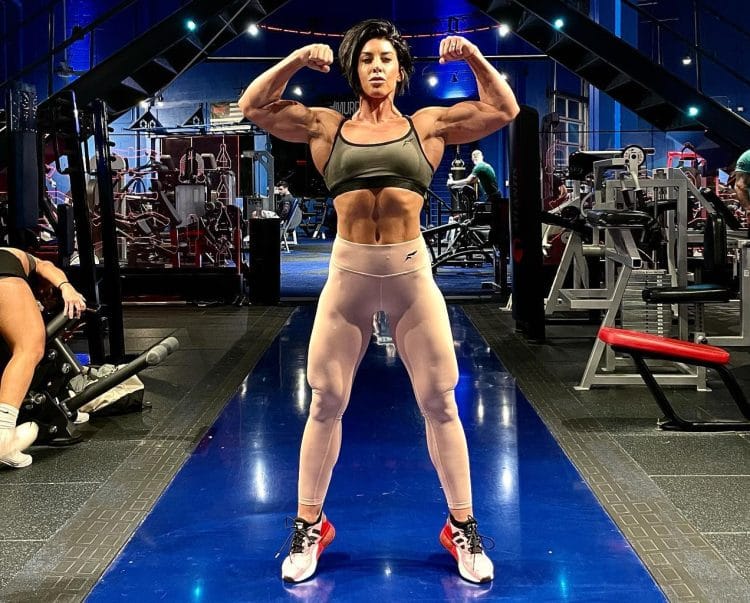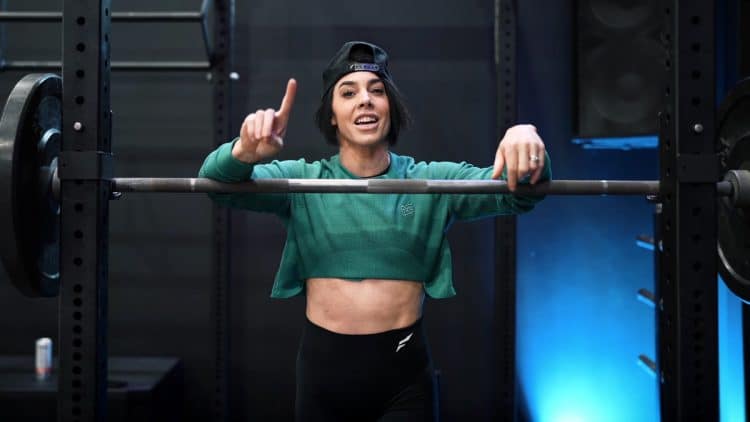Dana Linn Bailey reached the top of the sport back in 2013 as a Women’s Physique competitor. Speaking on her YouTube channel, DLB explained that bar position, the elevation of the heel, and head position are essential to a better squat.
During her illustrious career, Bailey made the IFBB Pro League her playground in the Women’s Physique category. Sporting symmetry, balance, and an outstanding back, Dana established herself as one of the best during the mid-2000s. She reached the pinnacle of bodybuilding in 2013 at Olympia, but she was unable to defend the title successfully in 2014 against Juliana Malacarne.
In retirement, Bailey is a fantastic ambassador for the sport. She recently joined four-time Mr. Olympia Jay Cutler for a brutal chest and triceps workout. In addition, she tested her strength and endurance with bodybuilding coach Hany Rambod, who led Derek Lunsford and Hadi Choopan to success at the 2022 Mr. Olympia competition. During the training session, Rambod guided Dana through an exhausting FST-7 shoulder workout.

The last time fans heard from Bailey, she shared ‘five pro tips’ for building bigger biceps faster. She advocated for moderate weight and emphasized the importance of range of motion. In her latest training tip, Linn Bailey took a closer look at how to maximize squat results.
Are squats a mandatory exercise? Absolutely not. But, if you’re looking to elevate your physique, boost your strength, foster athletic prowess, improve posture, and even torch fat, then incorporating squats into your routine is a smart move. However, before you dive into this powerhouse exercise, it’s crucial to master proper form and take all necessary safety measures to ensure a safe and effective workout.
Dana Linn Bailey’s #1 Tip for Better Squat Practices: Bar Positioning
At the beginning of her video, Dana shared that she changed her squat by utilizing various bar positions. She elaborated on some of the differences between using a lower bar position versus a higher bar position.
Level Up Your Fitness: Join our 💪 strong community in Fitness Volt Newsletter. Get daily inspiration, expert-backed workouts, nutrition tips, the latest in strength sports, and the support you need to reach your goals. Subscribe for free!
“Alright, so the first thing that I changed with my squat — because I didn’t even know of a low bar squat, I switch my bar position to a low bar position. So, the difference between a high bar squat and a low bar squat is just the position it is placed on your back. High bar is kind of going to sit on top of your shoulders, and you’re creating a shelf with your traps.
It kind of just sits there. It’s going to be higher up on your back, which then, also creates your body position to be more upright, creating more emphasis on the quads. A low bar squat is obviously – the bar is going to be placed lower on your back. So, it actually sits kind of on the back of your rear delts. You’re going to pin it between your shoulder blades so it’s underneath your traps and you’re pinning it towards you,” says Dana Linn Bailey.
Bailey said leaning forward results in a greater emphasis on the glutes and hamstrings.
“Anytime you lean a little bit further, that’s going to put greater emphasis on your glutes and hams. This really made my squats number one — a lot heavier. Because my hamstrings and glutes are stronger that way. The bar position because it’s a little bit lower actually made it like my center of gravity feel a little better. This bar position is just like a stronger position for me.
Both are very good. Both you can do. If you’re looking to hit more quads, I would do a high bar position; if you’re looking to hit more hamstrings and glutes, do a low bar. But practicing both is good,” Bailey added.
Tip #2 — Applying Elevation to the Heel During Squats
For her second tip, Bailey recommends investing in Olympic lifting shoes or an elevation wedge. If those options are unavailable, she said to use weight plates.
“Second thing that really helps improve my squat was – I invested in some Olympic lifting shoes. The purpose of these are they have a heel, an elevation to the heel, they’re nice and solid. I have very very tight calves, which also pull on my Achilles, which make it a little bit harder for me to get depth because to get lower, I ended up where my heels were actually raising up. Anytime your heels are raising up, you’re on your toes and then your off balance. So, we know when we squat, we want to push through our heels.”
“If you don’t have squat shoes, I use these awesome – this is by Prime Fitness – it’s just a heel elevation little wedge. So, you can stand on these barefoot or just regular shoes. I would not stand on these and also have heel elevators.”
Tip #3 — Head Position While Lifting
Bailey said head positioning is key to successful squats as some of her older techniques resulted in a loss of balance and/or neck strain.
“Third thing is actually head position. It’s funny because when I first learned how to squat it was back in high school. I remember the strength and conditioning coach used to tell us to look upwards. I just remember being like, every time I would squat down, I felt like number one I was off balance because it felt weird. Two, I felt strain in my neck.”
Dana explained that she modified the way her head was positioned after watching YouTube videos from Richard Hawthorne. She stressed that the most important detail is ensuring a “neutral head position.”
“My good friend Richard Hawthorne, if you don’t know who Richard Hawthorne is, he’s an animal athlete, they call him the ant. He can lift like 11 times his body weight, he’s strong as fu**. So, I saw him get under a bar. He gets under the bar, walks it out. He’s looking at the camera and right before he went to squat, he put his head down. I was like, ‘all these years of me being off balance and like feeling odd,’ so I was like, ‘okay, I’m going to try it next time I squat, I’m going to put my head down too.
What I found was number one, it kept my head — you want to keep a neutral spine position. If you’re squatting and looking up, you’re creating this little kink in your neck and that’s the same, you also don’t want to have your chin to your chest,” advised Dana Linn Bailey.
Even though she’s stepped away from competing, Dana Linn Bailey hasn’t stopped challenging herself. Last November, she joined powerlifting royalty C.T. Fletcher for a wild 140-rep Smith machine bench press training session.
Watch the full video below:
RELATED: Bodybuilder Dana Linn Bailey Shares Her Entire Supplement Stack
Having accrued a wealth of workout experience throughout her career, Bailey’s squat tips are ideal for anyone. She hopes to encourage safer training practices since calling it a career almost 10 years ago.









